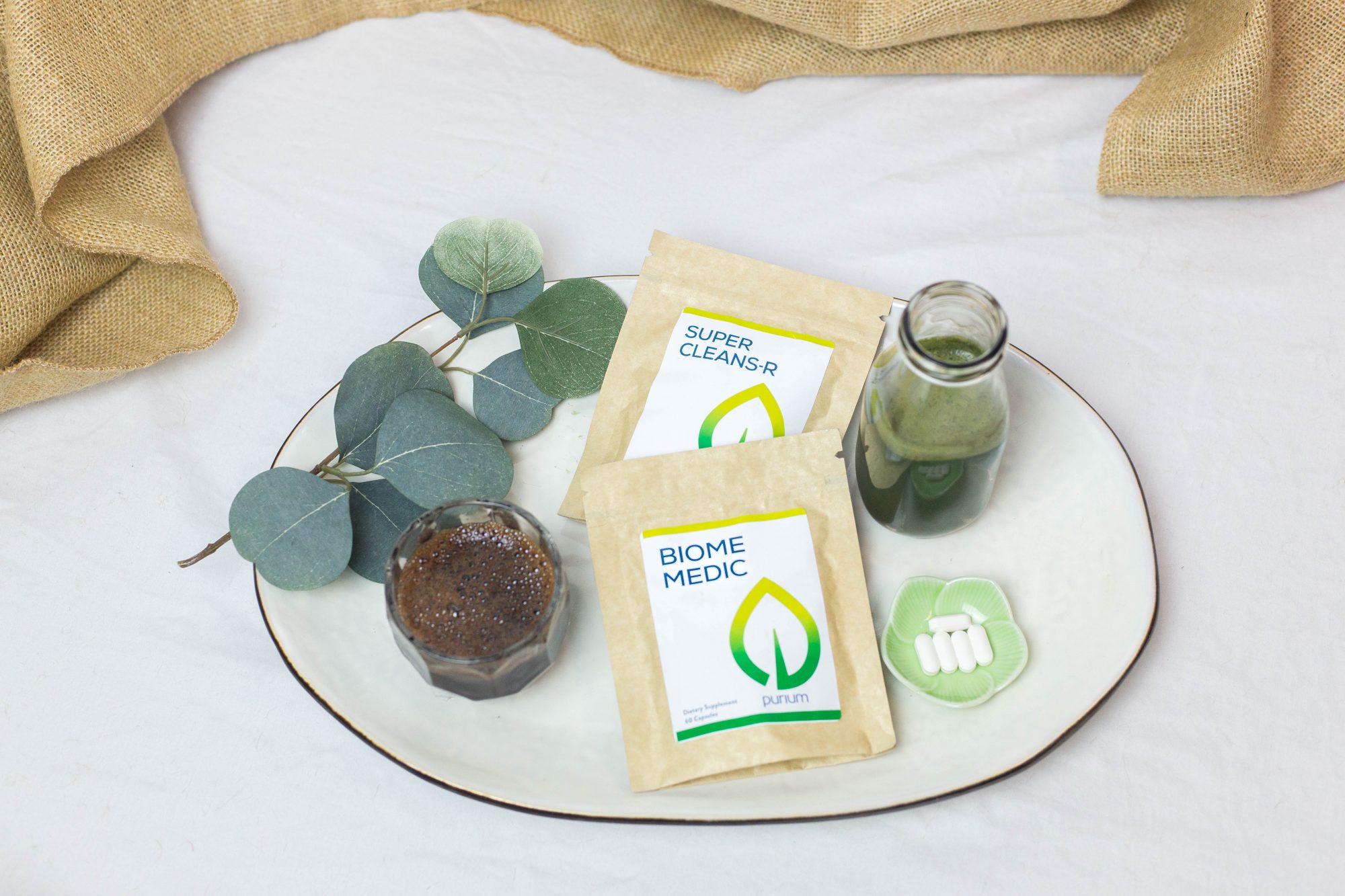Living with diabetes can be exhausting. From counting carbs to checking your blood glucose levels after every meal, it’s time consuming and can trigger stress. But what if there was a way to support your daily life? To help, we’re shedding light on important statistics, giving a guide to the essentials of a healthy diet for diabetics and discussing where Purium can fit in.
Special Note: We are not medical professionals. Please always remember to consult with your doctor or practitioner before making lifestyle changes, especially when it relates to serious medical conditions.
Diabetes: What You Need to Know
Diabetes Explained
Diabetes describes insulin-production issues in the body. Insulin is a hormone that helps control blood glucose and contributes to how the body produces energy.
When insulin is not properly controlled, the body cannot maintain the steady blood glucose levels that it craves. Because of this, someone may become hyperglycemic (high glycemic levels) or hypoglycemic (low glycemic levels).
When cells cannot respond properly to insulin, this is called insulin resistance, which also contributes to diabetes.
There are over 34 million Americans who have diabetes and of that 34 million, 7.3 million didn’t even know they had it.
There are three different types of diabetes, all differentiated by what exactly caused the insulin resistance. Here they are:
- Gestational: Occurs during pregnancy (affects both parent and child)
- Type 1: Occurs at any age and attributed to by genetics (a hereditary type of diabetes)
- Type 2: Occurs at any age and attributed to by lifestyle and diet (an unhealthy diet composed of excessive fats and sugars)
The International Diabetes Federation reports that 90% of all diabetes cases are type 2. Lifestyle has such a profound effect showing that the power to lower that number is in our hands.
Prediabetes
As the name might imply, prediabetes is when somoene’s blood glucose levels are elevated, but not high enough to be considered diabetes. For people who develop Type 2 diabetes, prediabetes is almost always a precursor to it.
Out of the 88 million adults that have prediabetes, a staggering 84% don’t know they even have it. This unfortunately means that millions of Americans live not knowing that they are on the verge of developing Type 2 diabetes.
Healthy Eating with Diabetes
Plate Method
Whether it was home economics, nutrition or health class, you might remember being given a special laminated meal plate. The plate was split into three separate sections.
One side of the plate is dedicated to greens/veggies. The other side is split between two sections: protein, and grains and starchy foods. Together, they made up “the ideal meal.”
As it turns out, that diet isn’t just beneficial to children. In fact, The American Diabetes Association recommends using “the plate method” to help prepare meals for diabetics. This is because It helps control portion size, but at the same time, it gives freedom of choice.
It should be mentioned that you can add one serving of fruit and/or diary if you’d like. Just be mindful and make smart choices.
What to Eat
So, what exact foods should you be loading your plate with? Good question! The Mayo Clinic recommends sticking to a healthy carb diet, including fiber-rich foods and “good” fats.
What foods fall under these categories? Here are some go-to’s courtesy of NIDDK:
For non-starchy veggies, you’re safe with the following:
- Broccoli and other greens
- Carrots
- Peppers
- Tomatoes
If you remember, starchy veggies are allowed as well, but in smaller quantities. These should be okay:
- potatoes
- green peas
- corn
For your proteins, it’s best to stick to lean meat, chicken and turkey, preferably without the skin. The Mayo Clinic actually recommends fish as well, because they are heart-healthy.
Looking for vegan protein options? No problem. Make sure to include these in your diet:
- chickpeas and split peas
- nuts and peanuts
- tofu
Protip: To keep things low-fat, be sure to use canola and olive olive at room temperature while cooking.
Living the Purium Lifestyle with Diabetes
Here at Purium, we like to support healthy living. So, how does the Purium lifestyle work in a diabetes diet? Well, our Ultimate Lifestyle Transformation is all about detoxifying and creating lasting change.
The products in this 30-day program will nourish and detoxify your body with vegan protein, greens, healthy fats, gut health, organic super fruit, and natural colon cleansing support. Not to mention that the products that comprise the program are great for those eating a diabetes-conscious diet, too.
Here’s how:
- Super Amino 23: Pure, vegan protein support. Composed from legumes, Super Amino 23 helps support the body’s production of protein. As an essential macronutrient, protein is important for diabetics. Protein can help you full, decreasing the likelihood of snacking and accidentally tilting your glucose levels over the limit. (2)
- Power Shake: Alkalizing greens & antioxidant-rich Rice Bran Solubles. Nutrient-rich greens can help support blood glucose levels, especially Vitamin C (3). In addition, antioxidants support the body’s response to inflammation and protect the eyes from macular degeneration (which are important for diabetics). (4), (5)
- Apothe-Cherry: Antioxidant-rich fruit. Antioxidants help support the body by fighting free radicals damage. Plus, tart cherries in Apothe-Cherry help support better and deeper sleep with natural melatonin and anthocyanins (6). Tart cherries have been linked to balanced blood glucose for diabetic patients (7). The National Sleep Foundation reports that deeper sleep can also help blood glucose levels. So, tart cherry is a definite must-try for diabetics!
- Biome Medic: Gut-supporting probiotics, prebiotics and herbs. New studies are discovering that the gut microbiota (bacteria living in the gut) may play a role in diabetes. (8) This is because microbiota can be associated with the metabolic syndrome and how the gut processes food and sugars.
Physical Activity
Other than altering your diet, another way to mitigate the risk of prediabetes and type 2 diabetes is exercise. According to the CDC, adults should get at least 150 minutes of moderate intensity cardio every week for health benefits. In addition, the CDC also lists muscle strength training as a priority twice a week. Check out our blog on a home workout that can be done from home with zero equipment.
Purium Product Honorable Mentions
At Purium, we’re here to support every lifestyle. Here is another product that may be of help if you’re living with diabetes.
- Control Pre-Meal Capsules: Contains whole foods and plants that may support blood sugar levels and neutralizing starches found in processed carbs
Stay Healthy & Happy
Share this blog with a friend and check out more of our superfoods!
These statements have not been evaluated by the U.S. Food and Drug Administration (FDA). The recommended use of Purium Health Products is not intended to diagnose, treat, cure or prevent any disease or medical condition. Always consult with a professional medical practitioner before taking any dietary supplement, especially if pregnant, nursing, taking prescription medications or under a doctor’s medical care.
Studies
- Tabák, A. G., Herder, C., Rathmann, W., Brunner, E. J., & Kivimäki, M. (2012). Prediabetes: a high-risk state for developing diabetes. Lancet, 379(9833), 2279.
- Batterham, R. L., Heffron, H., Kapoor, S., Chivers, J. E., Chandarana, K., Herzog, H., … & Withers, D. J. (2006). Critical role for peptide YY in protein-mediated satiation and body-weight regulation. Cell metabolism, 4(3), 223-233.
- Ellulu, M. S., Rahmat, A., Patimah, I., Khaza’ai, H., & Abed, Y. (2015). Effect of vitamin C on inflammation and metabolic markers in hypertensive and/or diabetic obese adults: a randomized controlled trial. Drug design, development and therapy, 9, 3405.
- Ma, L., Dou, H. L., Wu, Y. Q., Huang, Y. M., Huang, Y. B., Xu, X. R., … & Lin, X. M. (2012). Lutein and zeaxanthin intake and the risk of age-related macular degeneration: a systematic review and meta-analysis. British Journal of Nutrition, 107(3), 350-359.
- Chen, X., Rong, S. S., Xu, Q., Tang, F. Y., Liu, Y., Gu, H., … & Zhao, C. (2014). Diabetes mellitus and risk of age-related macular degeneration: a systematic review and meta-analysis. PLoS One, 9(9), e108196.
- Howatson, G., Bell, P. G., Tallent, J., Middleton, B., McHugh, M. P., & Ellis, J. (2012). Effect of tart cherry juice (Prunus cerasus) on melatonin levels and enhanced sleep quality. European journal of nutrition, 51(8), 909-916.
- Ataie-Jafari, A., Hosseini, S., Karimi, F., & Pajouhi, M. (2008). Effects of sour cherry juice on blood glucose and some cardiovascular risk factors improvements in diabetic women: A pilot study. Nutrition & Food Science, 38(4), 355-360.
- Aydin, Ö., Nieuwdorp, M., & Gerdes, V. (2018). The gut microbiome as a target for the treatment of type 2 diabetes. Current diabetes reports, 18(8), 55.
- Furmli, S., Elmasry, R., Ramos, M., & Fung, J. (2018). Therapeutic use of intermittent fasting for people with type 2 diabetes as an alternative to insulin. Case Reports, 2018, bcr-2017.




